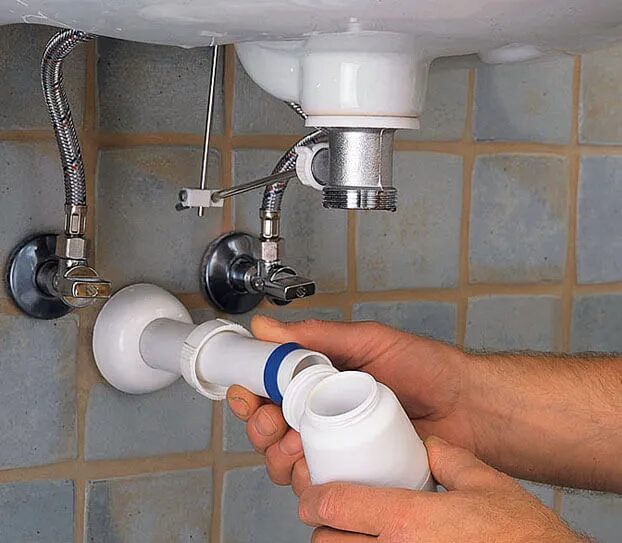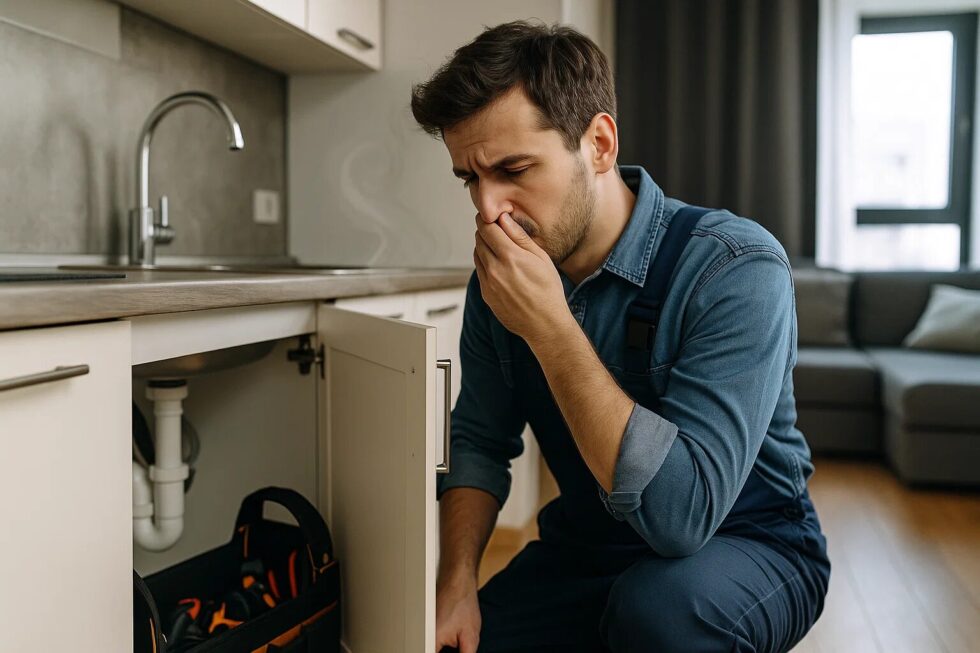Sewage smell in an apartment is a problem that can appear suddenly and make daily life very unpleasant. Often, it indicates damage in the plumbing system, lack of proper ventilation, or simple neglect in drain maintenance. The source of the smell may be hidden and requires systematic inspection, from bathroom traps to the main sewage stacks in the building. The problem can occur in both new apartments and old tenement houses where installations are decades old. It’s important to know that the cause is not always in the installation itself – sometimes it’s as simple as a dry trap, a leaky gasket, or improper ventilation of the stack. In Poland, the number of complaints to building administrators about sewage odor is growing, especially in blocks from the 1970s and 1980s. That is why quick reaction and knowing which elements to check first are crucial. On how to recognize the source, what you can fix yourself, and when to call a professional, reports G.business.
The most common causes of sewage odor in apartments
Sewage odor rarely appears without reason and usually results from specific issues. The most common source is the trap, designed to block unpleasant smells through a water barrier. If the water in the trap dries up – for example, in a rarely used room – gases from the sewer line flow freely into the apartment. Other frequent causes include leaking pipes, poorly installed gaskets, cracks, or loose joints. Ventilation also matters – a clogged vent stack can cause odors to backflow. In apartment blocks, the issue may also result from neighbors misusing the system. In modern buildings, cost-cutting during installation often leads to failures. It’s worth remembering that strong sewage odor can be harmful to health. That’s why every apartment owner should know the main causes and respond quickly.
Most common sources of sewage odor:
- dried-out water in traps,
- leaking or poorly installed pipes,
- clogged ventilation stacks,
- damaged gaskets around toilets and sinks,
- buildup of dirt in drains,
- backflow of sewage due to clogs,
- construction errors in the system.
How to check where the smell comes from
To find the cause of the unpleasant odor, act methodically. First, check all traps – whether they contain water and are not clogged with debris. Next, carefully inspect pipes and gaskets, especially around toilets and sinks. Pay attention to joints – even tiny leaks can release strong odors. In blocks of flats, also check whether the smell is coming from the ventilation grille. If the problem occurs only at certain hours, the cause may be overloading of the sewage stack. Observe whether the odor intensifies after using water in the kitchen or bathroom. It’s also wise to ask neighbors – if the problem is widespread, the building administration is responsible.
Checklist for odor detection:
- Check traps and refill them with water.
- Clean drains mechanically or with cleaning products.
- Inspect pipes and gaskets at joints.
- Observe ventilation stack function.
- Note if odor intensifies after heavy water use.
- Consult neighbors and building management.
- Call a plumber if necessary.
DIY methods to get rid of the odor
In many cases, you can solve the problem yourself without calling a professional. The simplest method is regularly filling traps with water – especially in rarely used rooms. Use natural cleaning solutions like baking soda and vinegar, which effectively remove buildup and neutralize odor. Special chemical drain cleaners sold in hardware stores can also work, but they should be used with caution. Regularly clean the shower drain cover and replace worn gaskets. Ground-floor apartments can benefit from installing a check valve to prevent backflow. Don’t forget ventilation – cleaning grilles improves air circulation and reduces odor risk. If the smell persists despite these efforts, it’s time to consult an expert.

Popular DIY solutions:
- refill traps with water,
- clean drains with baking soda and vinegar,
- use chemical drain cleaners carefully,
- replace gaskets regularly,
- install backflow prevention valves,
- check and clean ventilation,
- air out the apartment.
When should you call a plumber
DIY isn’t always enough. If the odor is very strong and does not go away despite attempts to fix it, a plumber is needed. Professionals have specialized equipment, such as inspection cameras, to check pipe conditions. The cost of such services in Poland starts at around PLN 300–400, depending on the city and the complexity of the issue. In more serious cases, like replacing sewage stacks, costs can reach several thousand PLN. Building administration is obliged to intervene if the malfunction concerns shared infrastructure. Always report the issue to the property manager. A plumber can decide whether simple sealing is enough or a larger repair is necessary. Ignoring the problem can lead not only to discomfort but also to serious damage in the apartment.
Average plumbing service costs in Poland:
| Service | Average cost (PLN) |
|---|---|
| Plumber visit – diagnosis | 150–250 |
| Mechanical drain cleaning | 300–500 |
| Gasket and trap replacement | 100–200 |
| Sewer camera inspection | 300–600 |
| Stack replacement | from 2000 |
How to prevent problems in the future
The best way to fight sewage odor is prevention. Regular drain cleaning and the use of natural agents prevent buildup. Never pour kitchen grease down the drain, as it hardens and blocks flow over time. Also important is regular inspection of gaskets and traps. In modern apartments, investing in mechanical ventilation systems can prevent air from backing up from stacks. In multi-family buildings, it’s crucial to report issues to building management so they can be fixed on a system-wide level. Prevention is always cheaper and easier than major repairs.
Key prevention tips:
- clean drains regularly,
- avoid pouring grease down the drain,
- check gaskets and traps,
- ensure proper ventilation,
- use natural cleaners,
- act quickly at first signs of odor,
- report issues to management.
Stay connected for news that works — timely, factual, and free from opinion — and insights that matter now: Smart Home Technologies: How to Automate Everyday Life
